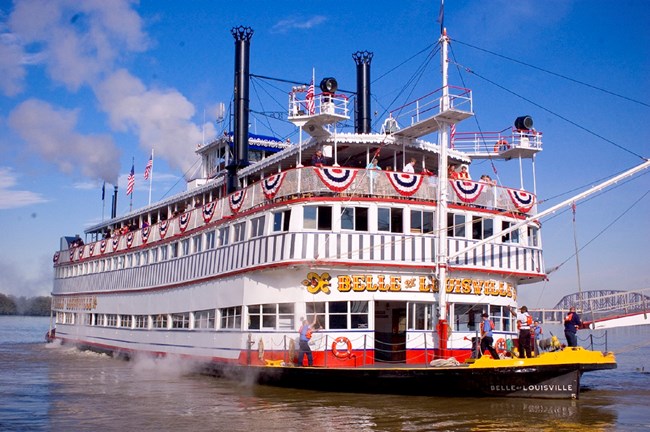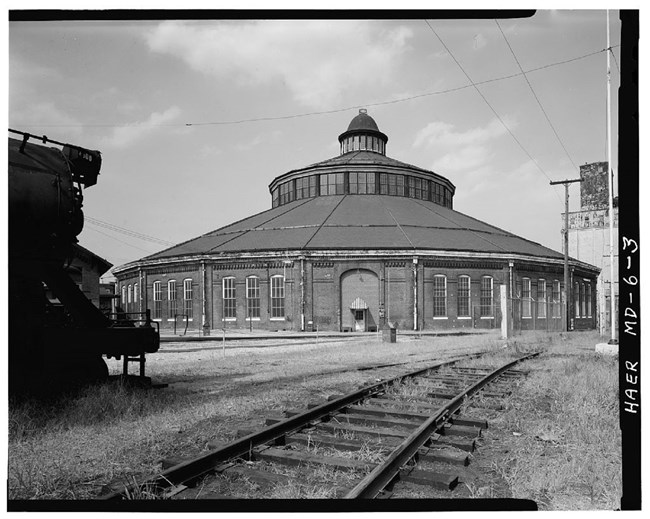Part of a series of articles titled Teaching with Historic Places Program and Where Did History Happen?: Selections from CRM, Vol 16, no 2 (1993).
Article
Teaching with Historic Places: Where Did History Happen?

Photo by Bo, CC BY 2.0, https://commons.wikimedia.org/w/index.php?curid=3705333
Selections from a Thematic Issue of CRM Vol 16 No. 2 1993
Published by the National Park Service, Cultural Resources
By: Beth M. Boland
Where Did History Happen?
Jaded 16-year olds, bored with the docent’s recitation of furnishings, suddenly drop to their knees to touch “the original 17th century floor.” A visitor to the USS ARIZONA stands tearfully silent while others throw leis into the water. Tourists stare in awe at the cliff dwellings of Mesa Verde. Historic places have the power to move us in profound ways – suddenly, sometimes unexpectedly, to imprint upon our minds and our hearts the reality of our past, and the longing to know more. It is this sense of excitement generating intellectual curiosity that Teaching with Historic Places, a cooperative program of the National Park Service and the National Trust for Historic Preservation, seeks to impart to teachers and students alike.
America recognizes thousands of historic places that are dramatic and enticing because of their associations with revered events and people, their beauty, or their mystery. And every community has these special places that document how those before us lived, struggled, and influenced who we have become. The National Historic Preservation Act of 1966 was passed to recognize just such places. In their rush for progress, communities too often were sacrificing the very monuments – impressive or humble—that represented the progress they had already achieved and that embodied their unique identity.

Historic American Buildings Survey, Library of Congress, https://www.loc.gov/resource/hhh.md0912.photos/?sp=4
Historic resources with state or local, as well as national, significance are listed in the National Register of Historic Places. Over 60,000 files contain text, maps, and photographs that document this country’s history, town by town, and region by region. This is the very information often most difficult for classroom teachers to obtain; very few textbooks exist on state history, and fewer still on localities. Yet, we soon discovered that merely to inform classroom teachers of the wealth of information available from the National Register of Historic Places would not be sufficient. We needed to produce materials that would be truly useful to teachers, but would not duplicate the efforts of others.
Together, the articles in this issue of CRM explain the origins, goals, and progress of the Teaching with Historic Places program within the wider contexts of educational programs that use the built environment – often called “heritage education” – and of national educational reform. Carol Shull, Chief of Registration for the National Register, explains how the program began and was shaped by advice from educators. Kathleen Hunter, Director of Education at the National Trust, summarizes current heritage education programs, and identifies some of the educational needs that these programs generally do not meet.
Reports by the Bradley Commission on History in Schools, the National Commission on Social Studies in the Schools, the National Council for Preservation Education, the National Park Education Task Force, and others demonstrated the widespread interest in education reform in the mid-to-late 1980s. John Patrick, Director of the Educational Information Resource Center (ERIC) Clearinghouse for Social Studies/Social Science Education, discusses curriculum reform, national standards projects, and the role of historic places. Salvatore Natoli, a geographer and Director of Publications for the National Council for the Social Studies, writes about the importance of “place” in geography, history, and our sense of ourselves.

Historic American Buildings Survey, Library of Congress, https://www.loc.gov/resource/hhh.co0447.photos/?sp=2
The basic building blocks for the Teaching with Historic Places program are lesson plans based on properties listed in the National Register of Historic Places. Educator Fay Metcalf explains the concepts embodied in the lesson plan format she developed. Each lesson uses documentation from National Register files and elsewhere as the basis for class discussions and activities. In her article, National Register historian Marilyn Harper examines various types of documents, and discusses effective selection and use.
“Knife River: Early Village Live on the Plains” provides an example of a Teaching with Historic Places lesson plan. The other completed lesson plans in what we intend as an ongoing series are “San Antonio Missions: Spanish Influence in Texas;” “When Rice Was King;” “Run for Your Lives! The Johnstown Flood of 1889;” “Log Cabins in America: The Finnish Experience;” “Roadside Attractions;” and “Attu: The Only North American Battleground of World War II.” In addition to appearing chronologically throughout the 1992-93 school year in Social Education, the journal of the National Council for Social Studies, they will be available soon as a set from the National trust’s Preservation Press. Lesson plans also form the basis for more complex educational kits organized around historic themes. The first of these, titled “American Work; American Workplaces,” is underway; another, on war and conflict, is just beginning.
A series of workshops has helped introduce the Teaching with Historic Places lesson plans and methodology to classroom teachers, National Park Service and National Trust educators, and others. The program partners have offered one- and two-day workshops on using and writing lesson plans at annual meetings of the National Council for the Social Studies and the National Trust for Historic Preservation. Week-long workshops for Park and Trust educators produced over 25 additional lesson plans, which will be published by the National Trust. The week-long workshops were funded by the National Park Service’s Parks as Classrooms program, discussed by interpretive specialist Bob Huggins.
To help teaching with historic places become a standard teaching methodology, the National Register and the National Trust began working with others to develop a curriculum framework that could be used in a variety of ways. Charles White, a professor at George Mason University, explains the experimental framework, and how it is being tested in a course at his university.
The National Register’s and National Trust’s Teaching with Historic Places is but one of a number of place-based education projects throughout the country. Kay Weeks and Ruthann Knudson write about the education activities of two other National Park Service programs.
At the time this article was written, Beth Boland was an historian with the National Register of Historic Places, Interagency Resources Division, National Park service; and the program coordinator for Teaching with Historic Places.
Last updated: July 8, 2019
